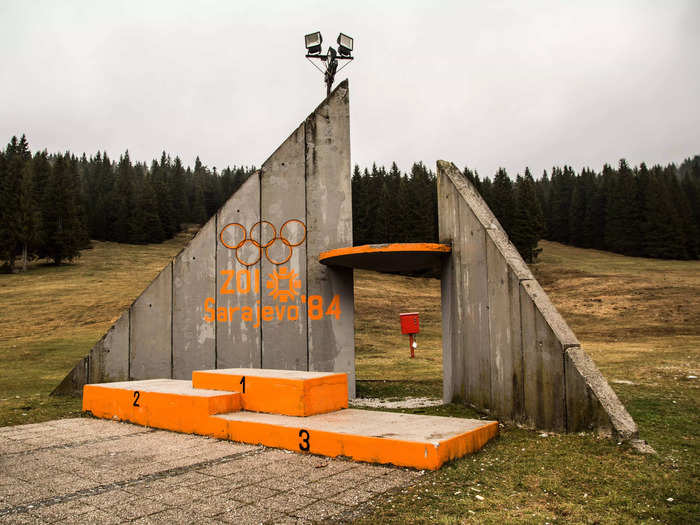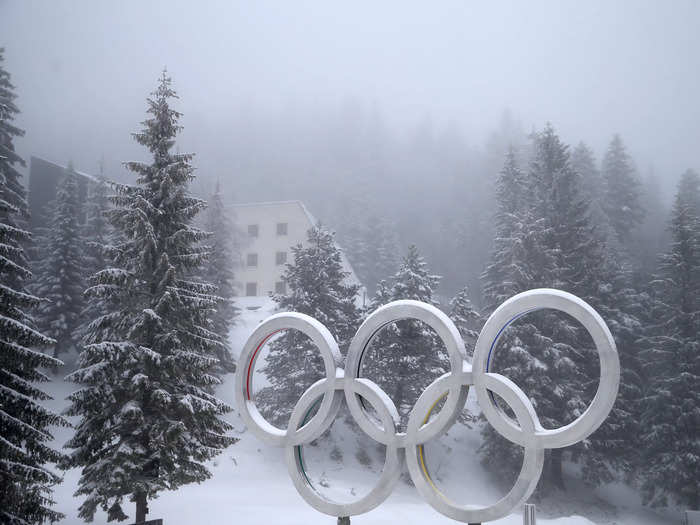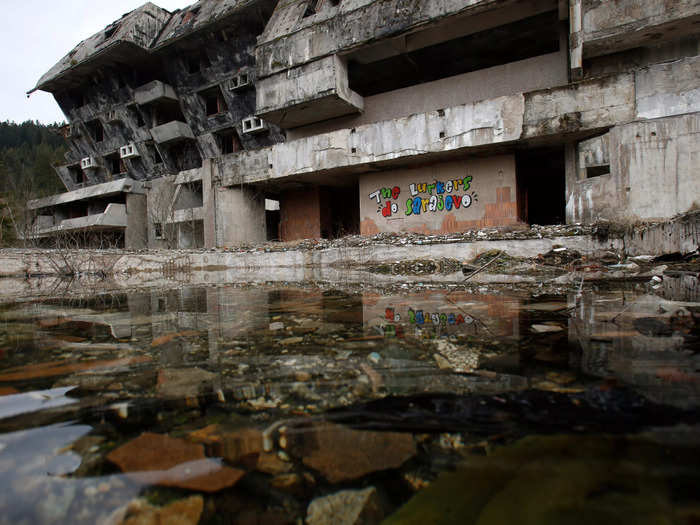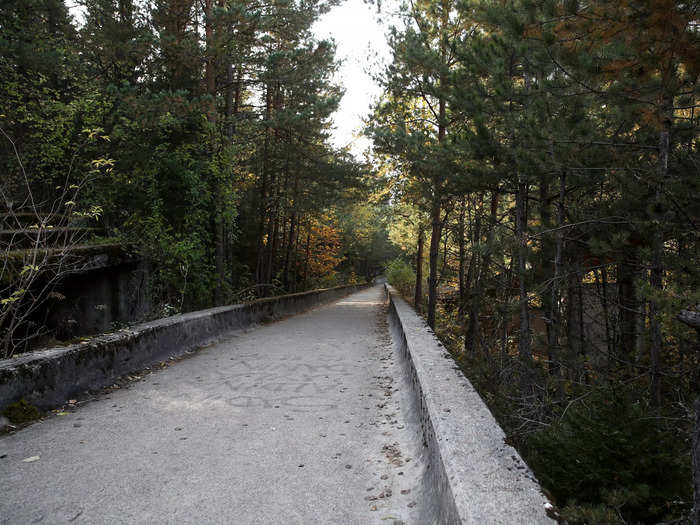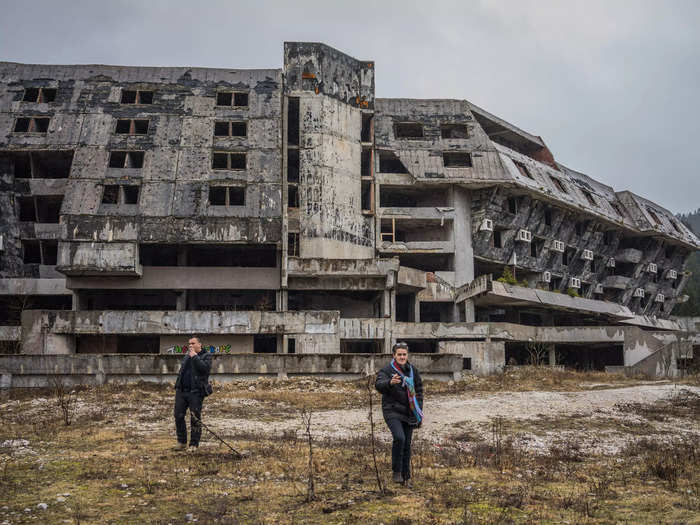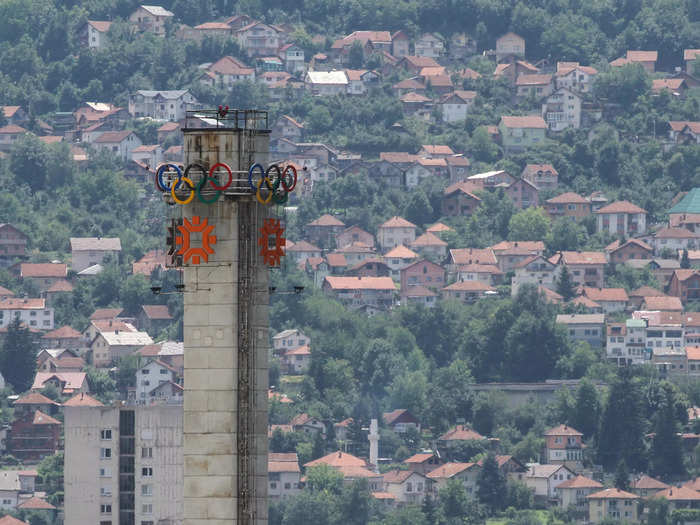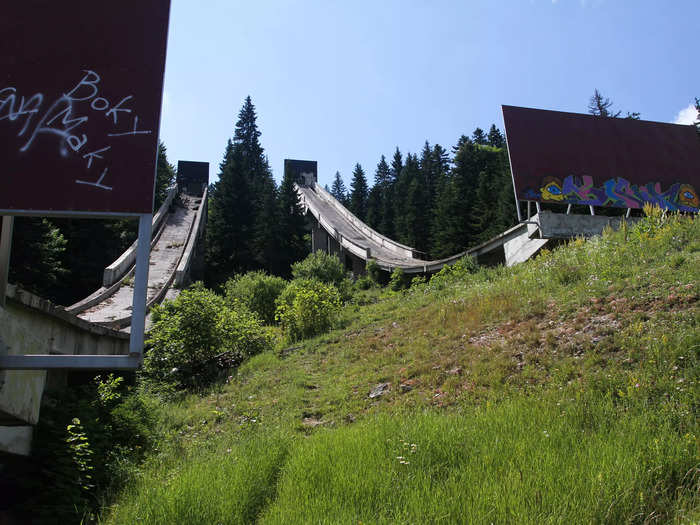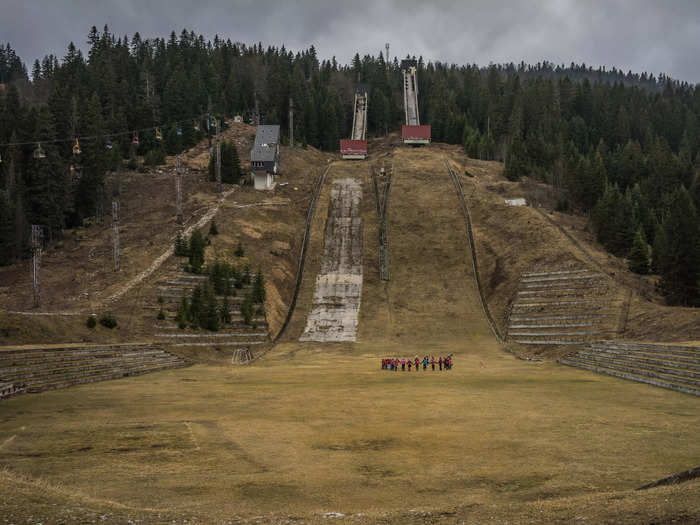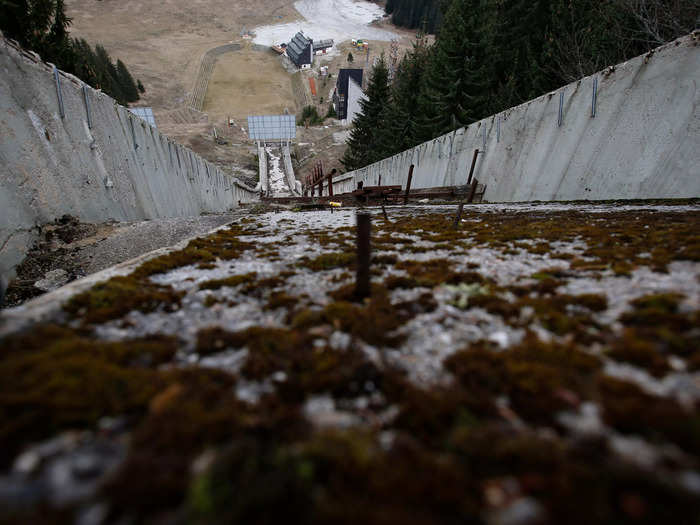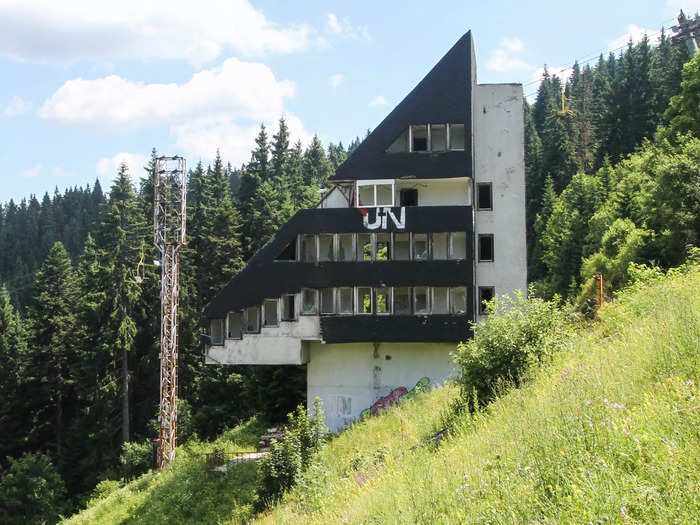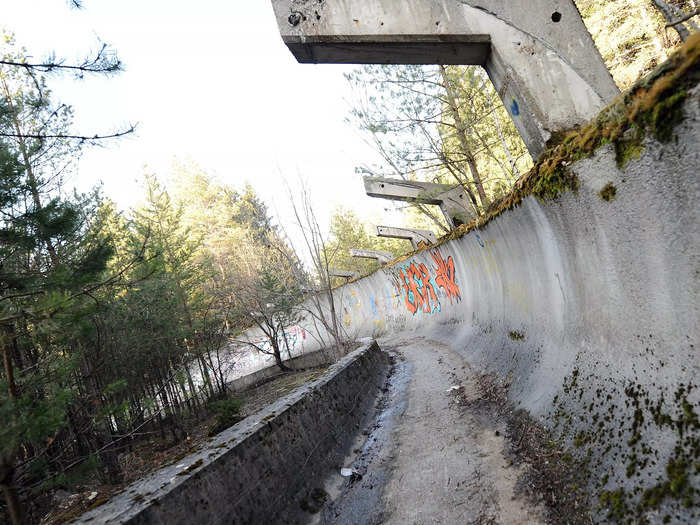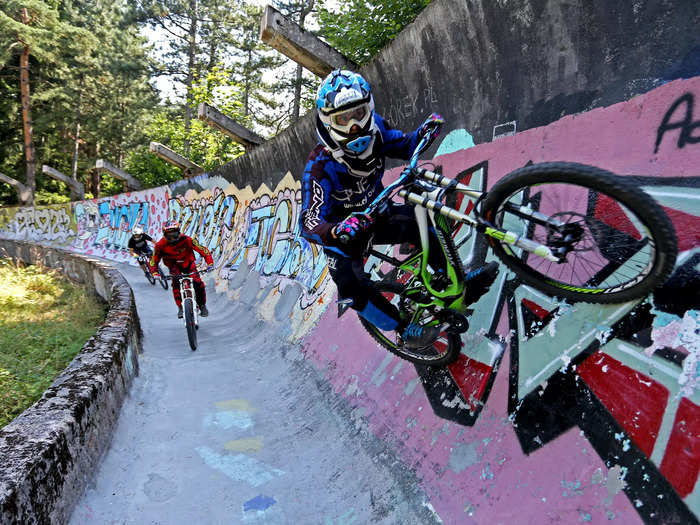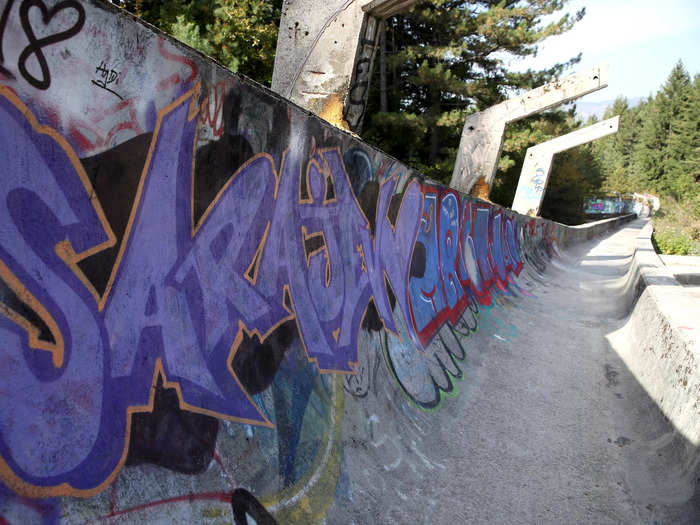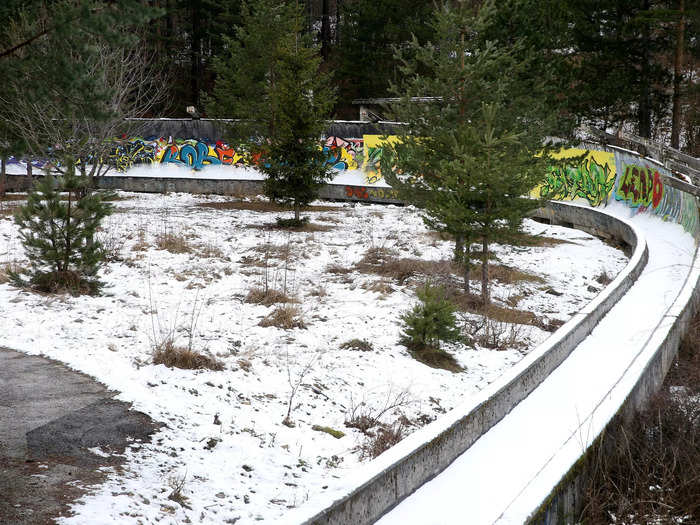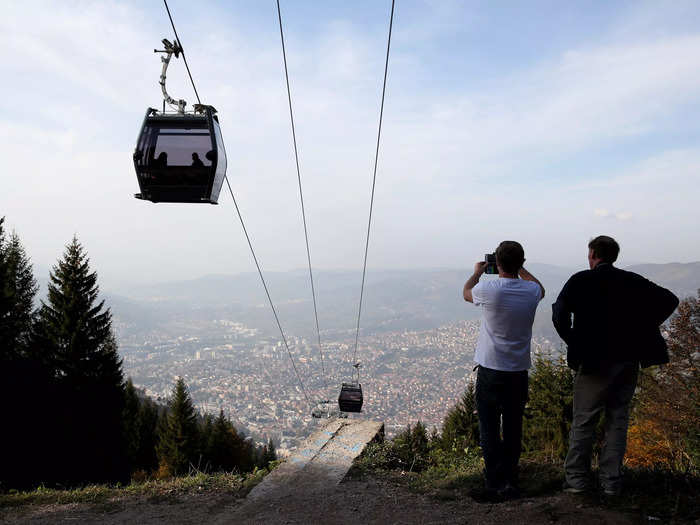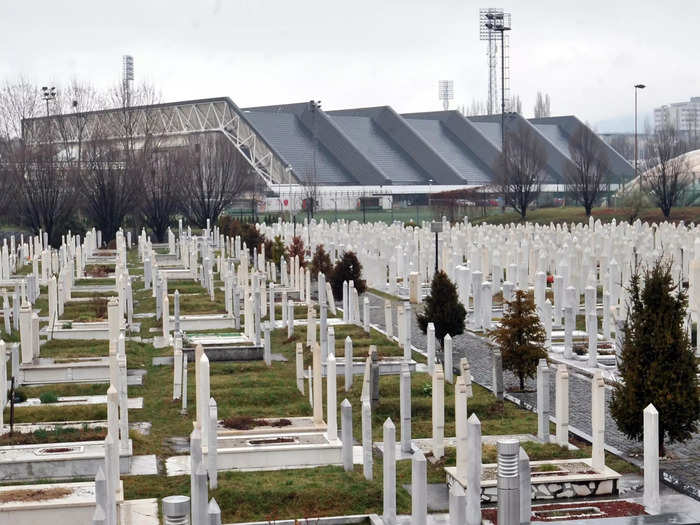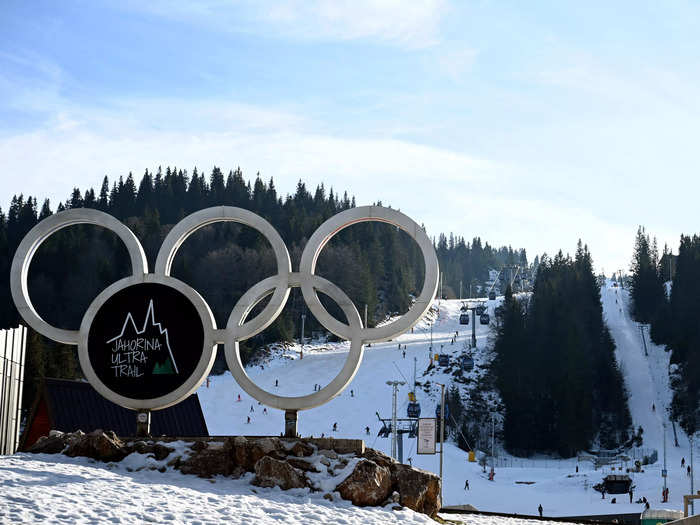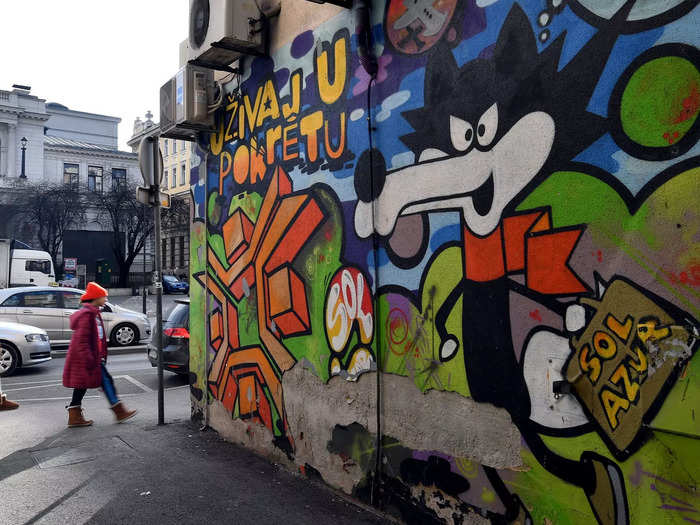The partially dismantled bobsleigh track which was damaged during past conflicts lies abandoned on Mount Trebevic, near Sarajevo on February 6, 2024.ELVIS BARUKCIC/AFP/Getty Images
- Sarajevo, the capital of Bosnia and Herzegovina, hosted the Winter Olympics in 1984.
- Not even a decade later, the city was ground zero in the war for Bosnian independence.
Forty years ago, the Yugoslavian city of Sarajevo hosted the 1984 Winter Olympics. Many new structures were built, and the Games were seen as something of a reunion since many countries had boycotted the 1980 Summer Olympics held in Moscow.
But six years later, the country would be thrown into turmoil during the Yugoslav Wars, which led to the fall of Yugoslavia. Sarajevo became the capital of a new country, Bosnia and Herzegovina, in 1992, but the fighting didn't end until 2001.
During the fighting, Olympic venues became battlegrounds, as ski slopes were heavily mined and hotels were turned into prisons.
While Sarajevo's story is singular, it's not the only former Olympics host city where venues now resemble ghost towns. Olympics host countries famously pour billions of dollars into building new venues, which sometimes fall into disrepair after the crowds have gone home.
Paris, which is hosting this year's summer Olympics, is aiming to avoid this costly mistake: 95% of the venues are already underway or will use existing locations that only need minor updates, Reuters reported in March, citing a report by credit rating agency S&P Global.
Here's what the 1984 Sarajevo Olympic venues look like in 2024.
The 1984 Winter Olympics were held in Sarajevo, Yugoslavia, from February 8 to 19.
The medal podium at the ski jump venue. Ioanna Sakellaraki / Barcroft Im / Barcroft Media via Getty Images
The 1984 Games were the first Winter Olympics to be held in a socialist state and the second consecutive Games to be held in a socialist country after the 1980 Summer Olympics in Moscow.
The 1984 Games were seen as a grand reunion, since many Western countries had boycotted the 1980 Summer Olympics, including the US.
The Olympic rings are seen on the Jahorina Mountain near Sarajevo, Bosnia and Herzegovina, on February 5, 2019. Dado Ruvic/Reuters
The US boycotted the Olympics in Moscow in response to the Soviet invasion of Afghanistan in 1979. More than 60 nations refused to take part, according to the US State Department.
In 1984, many of the events took place near Jahorina Mountain, seen here in 2019.
But soon after the Olympics ended, Yugoslavia was thrust into turmoil, with the country formally collapsing in 1992.
Graffiti by London creative collective The Lurkers, "The Lurkers do Sarajevo," is written on a destroyed hotel at Mt. Igman. Amel Emric/AP
A destroyed hotel at Mount Igman, where events including ski jumping were held in 1984, is pictured in 2014.
Sarajevo was almost immediately put under siege — just eight years after the Olympics ended, the bobsled track was turned into an artillery position by the Bosnian Serbs.
The bobsleigh track originally built for the 1984 Sarajevo Winter Olympics lies unused on Mt. Trebević. Tim Goode/PA Images via Getty Images
This is what the bobsled track looked like in 2014 — it's been almost completely left to nature.
Sylvia Hui at the Associated Press wrote that year, "Today, the abandoned concrete construction looks like a skeleton littered with graffiti."
Sarajevo was under siege for almost four years, "the longest siege of a capital city in the history of modern warfare," NPR reported.
This former Winter Olympic venue in 2014. Giles Clarke/Getty Images
NPR reported the Bosnian war led to 100,000 deaths and the "worst atrocities in Europe since World War II."
This hotel, which was built as part of the Olympic Village, was turned into a prison during the war.
The abandoned shell of a hotel constructed for the 1984 Winter Olympics and where competitors stayed. Giles Clarke/Getty Images
According to Getty, 10 years after the Winter Olympics, "the hotel was turned into a prison and place of execution for Bosnian Muslims — all overseen by Serb Forces."
Even the medal podium was turned into an execution site, Bloomberg reported.
By the time the war ended in February 1996, thousands of civilians were dead, and the new country of Bosnia and Herzegovina had to decide how to move forward.
Sarajevo 1984 Winter Olympics logo is seen on the tower near the Zetra Hall in Sarajevo, Bosnia and Herzegovina, on July 14, 2015. Jakub Porzycki/NurPhoto via Getty Images
Many of the Olympic venues had been damaged or destroyed by the constant bombing and warfare.
Decades later, many of the tracks and venues are still empty and abandoned, like these ski jumps at Mount Igman.
Abandoned Igman Olympic jumps in Sarajevo, Bosnia and Herzegovina on July 14, 2015. Jakub Porzycki/NurPhoto via Getty Images
According to Getty, "The area around the 90-meter hill was heavily mined during the Bosnian war."
Here's what they look like from another angle.
Children gather at the foot of the 1984 Olympic Ski jump hill at Mt. Igman just 25 kilometers from downtown Sarajevo. Giles Clarke/Getty Images
The mountains border the city.
The ski jump has been left to the elements.
The abandoned ski jumping facility is seen covered in moss at Mt. Igman near Bosnian capital of Sarajevo. Amel Emric/AP
Moss and debris cover the jumps.
There are reminders of the Olympics scattered throughout the old venues.
Destroyed Olympic rings on the abandoned Igman Olympic ski jump in Sarajevo, Bosnia and Herzegovina, on July 14, 2015. Jakub Porzycki/NurPhoto via Getty Images
These Olympic rings have fallen into disrepair.
Here's where the judges sat during the ski-jumping competition.
Judges tower on the Igman Olympic jumps in Sarajevo on July 14, 2015. Jakub Porzycki/NurPhoto via Getty Images
East Germany's Jens Weißflog and Finland's Matti Nykänen each took home gold medals in ski jumping that year.
The bobsled track was located on Mount Trebević, which was reachable by cable car from the city. It closed in 1989 and was destroyed during the war.
Sarajevo's abandoned bobsled track near Sarajevo in 2014. ELVIS BARUKCIC/AFP via Getty Images
"The remains of destroyed restaurants, hotels, sports facilities and mountain huts were left to rot and the thousands of mines were cleared at a painstakingly slow pace" after the war ended, The Guardian wrote in 2018.
After the war ended, the track gained two new uses: a place for graffiti artists to paint and a place for bikers to practice.
Downhill bikers train on the disused bobsled track from the 1984 Sarajevo Winter Olympics on Mt. Trebević near Sarajevo, Bosnia and Herzegovina, August 8, 2015. Dado Ruvic/Reuters
A photo from 2015 shows downhill bikers using the bobsled tracks for training.
There's hundreds of feet of concrete for artists to express themselves.
The bobsled track originally built for the 1984 Sarajevo Winter Olympics lies unused on Mt. Trebević. Tim Goode/PA Images via Getty Images
The walls are covered in tags and street art.
This is what it looked like in early 2018.
The bobsled track is seen on Mount Trebević in Sarajevo on January 16, 2018. Dado Ruvic/Reuters
The track on Mount Trebević was covered in snow when it was photographed in January 2018.
However, the cable car, which ferried people to the bobsled events on the mountain, triumphantly reopened in 2018.
Sarajevo below the Mount Trebevic cable car in 2018. Tim Goode/PA Images via Getty Images
The cable car follows the same route today as it did during the Olympics.
"In the past few years ... the mountain has slowly returned to something like its former self," The Guardian wrote in 2018. "Hotels, restaurants and cafes have been rebuilt, mines swept away and hikers from all over Sarajevo visit en masse."
Yet, the reminders of the war will always be part of Sarajevo's history, along with the Olympics. A wartime cemetery was built right next to the Zetra Olympic Hall.
A picture taken on March 19, 2019, shows the Kosovo wartime cemetery in Sarajevo. ELVIS BARUKCIC/AFP via Getty Images
Following the war, the Zetra Ice Hall was rebuilt in 1997 and reopened in 1999. It's still in use and is now known as the Juan Antonio Samaranch Olympic Hall.
In 2024, Sarajevo marked the 40th anniversary of the Olympics.
Olympic rings adorn ski slopes at Mount Jahorina on February 6, 2024. ELVIS BARUKCIC/AFP/Getty Images
In 2024, some of the slopes remain abandoned. Olympics branding, like these rings, is still visible.
Even though it's been four decades, graffiti with the Olympic mascot Vucko is still seen on the streets of Sarajevo.
Pedestrians walk past graffiti depicting the official Olympic mascot Vucko in an alley on February 7, 2024. ELVIS BARUKCIC/AFP/Getty Images
Unfortunately, Sarajevo isn't the only city that has to reckon with abandoned Olympic venues. There are empty stadiums all over the world.

